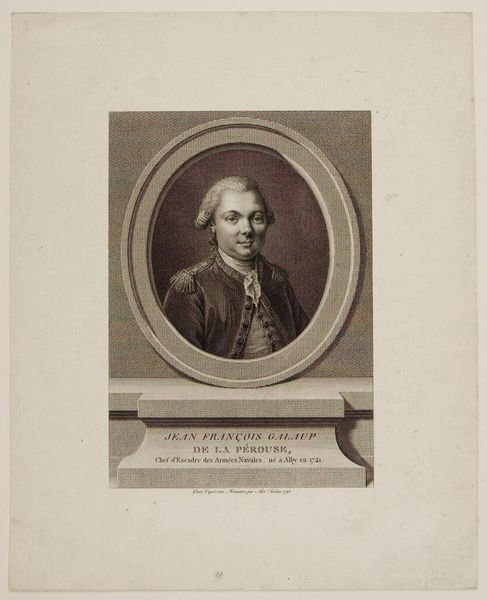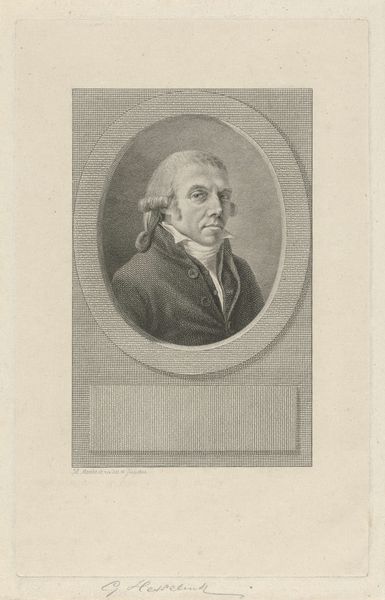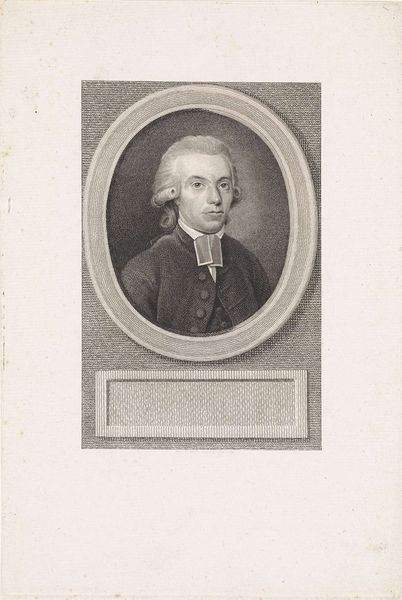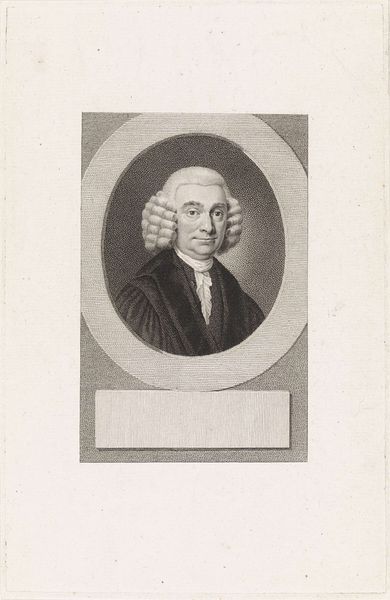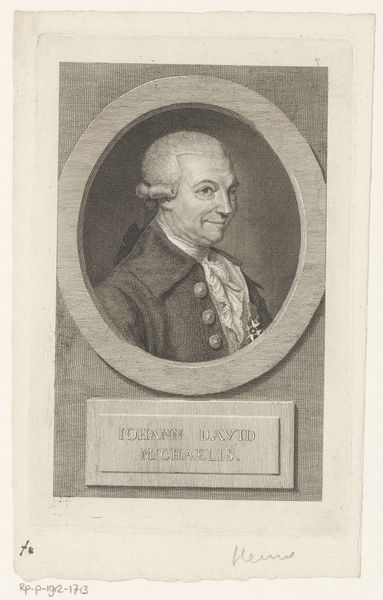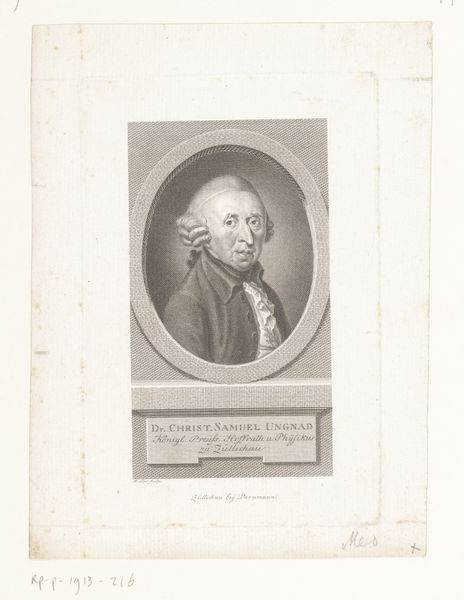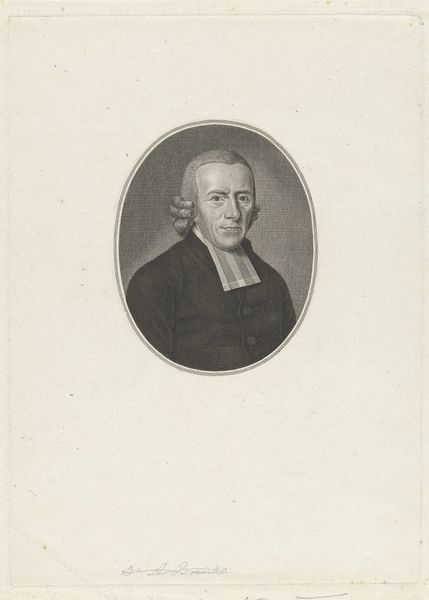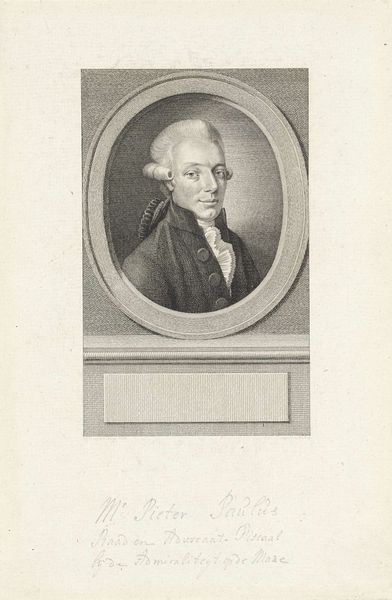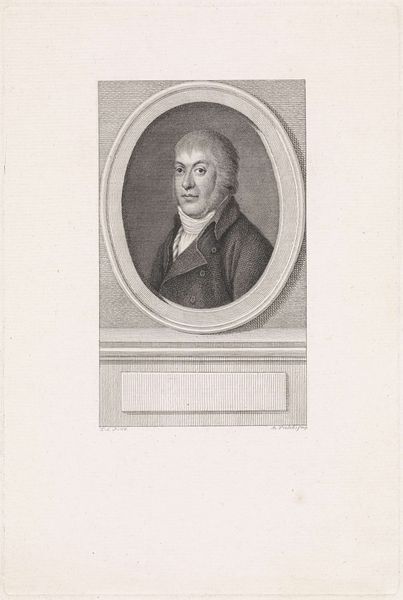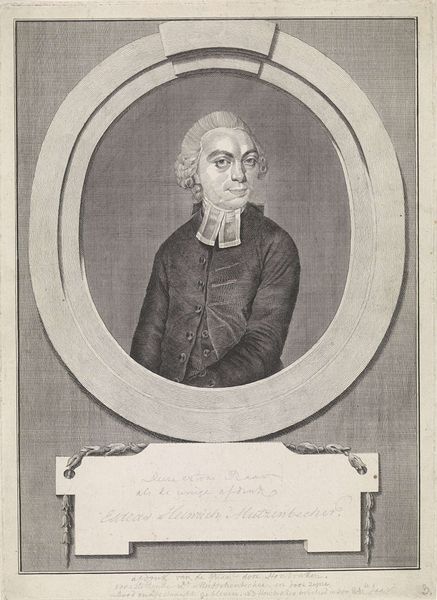
engraving
#
portrait
#
pencil drawn
#
neoclacissism
#
old engraving style
#
figuration
#
19th century
#
line
#
engraving
Dimensions: height 219 mm, width 146 mm
Copyright: Rijks Museum: Open Domain
Editor: Here we have Hendrik Roosing's "Portret van Jérôme Pétion de Villeneuve," an engraving from 1792, currently housed at the Rijksmuseum. It has a rather stern, almost clinical feel to it. What do you see in this piece? Curator: Ah, Pétion! He looks every bit the serious revolutionary, doesn’t he? To me, this isn't just a portrait; it's a statement, a carefully constructed image meant to convey virtue and intellect, very much in keeping with Neoclassical ideals. See how Roosing, the artist, employs precise lines and controlled shading. It's all about clarity and rationality. But doesn't he also look like he's about to launch into a fiery speech? Editor: He does seem very proper! I notice that it looks very precise and careful. Why do you think that is? Curator: Remember the French Revolution! This was a time of intense political fervor, and engravings like these were the mass media of the day. They spread ideas and promoted figures like Pétion, mayor of Paris, a leader of the Revolution. The style is purposeful. Do you get a sense of how different it is to, say, a flamboyant Rococo painting? Editor: Yes, it’s much more restrained. It makes sense that it has something to do with the Revolution and political events from that period. Curator: Precisely. This isn't just art; it’s propaganda, skillfully rendered. Think about how an image like this might have been received by people during that period. What sort of feeling it would generate in them. Editor: It’s incredible to consider the historical context woven into this seemingly simple portrait. I had no idea! Thanks! Curator: My pleasure. These portraits help us connect to these crucial turning points in history.
Comments
No comments
Be the first to comment and join the conversation on the ultimate creative platform.

